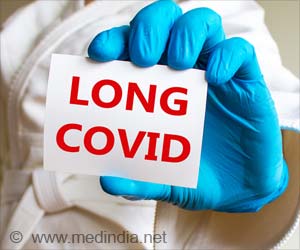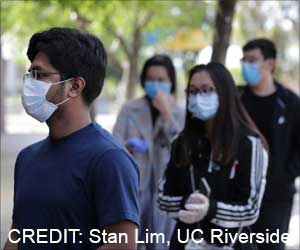Having a venous thromboembolism clot is linked to a five-times increased risk of death within 30 days. These clots occur commonly among patients with recent or current COVID-19 infection.

‘Postoperative care of surgical patients should include interventions to reduce VTE risk.’
Read More..




The study was completed by the University of Birmingham-led GlobalSurg-COVIDSurg Collaborative.Read More..
Patients were divided as having VTE within 30 days of surgery. COVID-19 diagnosis was defined as peri-operative; recent; previous; or no diagnosis past or present.
The postoperative VTE rate was 0.5% in patients without SARS-CoV-2; 2.2% in patients with peri-operative SARS-CoV-2; 1.6% in patients with recent SARS-CoV-2; and 1.0% in patients with previous SARS-CoV-2.
Patients with peri-operative COVID-19 were found to be at a 50% higher risk of VTE and those with recent SARS-CoV-2 at a 90% increased risk. Patients with past COVID-19 were at a 70% increased risk of VTE, but this result was of borderline statistical significance.
VTE was independently associated with 30-day mortality, increasing the risk of death during this period by 5.4 times. In patients with COVID-19, mortality without VTE was 7.4% and with VTE was again more than five times higher at 40.8% .
Advertisement
Co-author Elizabeth Li, General Surgery Registrar at University Hospital Birmingham, commented: “People undergoing surgery are already at higher risk of VTE than the general public, but we discovered that a current or recent SARS-CoV-2 infection was associated with greater risk of postoperative VTE.
Advertisement
Co-author Mr. Aneel Bhangu, Consultant Colorectal Surgeon from the University of Birmingham, commented: “Increased awareness and surveillance should be considered.
At a minimum, we suggest close adherence to routine standard VTE prophylaxis for surgical patients, including the use of anti-clotting medication when bleeding risk is minimal, and increased vigilance and diagnostic testing in patients presenting with signs of VTE, such as swelling in one calf, right sided chest pain and shortness of breath.”
They conclude: “Routine postoperative care of surgical patients should include interventions to reduce VTE risk in general, and further research is needed to define the best protocols for VTE prevention and treatment in this setting.
Source-Medindia












